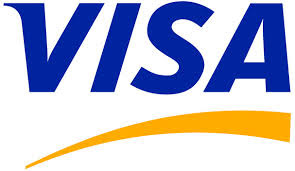Visa Debit Card
The debit card has been around since 1966, which means banks have had a lot of time to figure out new ways to charge you for using your own money.
Wells Fargo this week announced a plan to test a $3 monthly fee for debit card users in five states, and as I reported earlier today, these fees are starting to really add up for consumers. But fees aren't new. So we decided to take a look at the history of debit cards and their fees.
The first debit card may have hit the market as early as 1966, according to a report by the Kansas City Federal Reserve (pdf). The Bank of Delaware piloted the card. And by the '70s, several other banks were trying out similar ideas. Robert Manning, author of Credit Card Nation, said debit card usage picked up in the '80s and '90s as more and more ATMs started cropping up across the country. In 1990, debit cards were used in about 300 million transactions. In 2009, prepaid and debit cards were used in 37.6 billion transactions.
Debit card fees aren't actually new. Wells Fargo has been issuing debit cards since 1990, and spokesperson Lisa Westermann said the company charged $1 a month to use debit cards in some regions as recently as a few years ago.
"As merchants began paying financial institutions for the convenience of processing debit card transactions (including payment protection), fees slowly went away," Westermann said in an email.
Today, merchants typically pay a swipe fee each time a debit card is used. A Federal Reserve survey (pdf) found the average swipe fee is 44 cents. Those fees added up to $16.2 billion in 2009 for prepaid and regular debit cards.
Consumers are also using debit cards with greater frequency. An IBOPE Zogby International survey this summer found that, when making daily purchases, about 55 percent of consumers say they use their debit card more than half the time. Manning said many borrowers have seen their credit card limits cut. Others voluntarily cut back on credit card use. But banks see that as a problem, because in a few months, regulations -- which don't apply to credit cards -- will limit the amount they can charge in swipe fees.
Recently the Federal Reserve Board -- as directed by financial regulation (pdf) passed last year -- ruled the average swipe fee should be cut about in half. The new regulations go live in October. Wells Fargo estimated losses could be $250 million per quarter.













0 comments:
Post a Comment